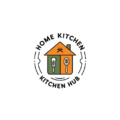In any commercial kitchen, cutting boards play a crucial role in food preparation. They’re not just pieces of wood or plastic; they are the workhorse tools that facilitate everything from slicing vegetables to chopping meats. But choosing the right cutting board is about more than just convenience—it impacts food safety, hygiene, and even the longevity of your kitchen tools.
A commercial kitchen is a bustling environment where efficiency, safety, and cleanliness are paramount. Selecting the right cutting board can contribute to all of these factors. In this post, we’ll explore why choosing the right cutting board is so important and offer guidance on selecting the best one based on your kitchen’s needs.
Why Choosing the Right Cutting Board is Crucial in a Commercial Kitchen
In a busy commercial kitchen, cutting boards are used every single day, often for several hours at a time. With high demand for cleanliness and efficiency, it’s essential to choose a cutting board that can handle the intensity of the job. Here’s why the right cutting board matters:
Food Safety and Hygiene
One of the most important factors when selecting a cutting board is food safety. Cross-contamination is a serious concern in commercial kitchens, where raw meat, vegetables, and cooked foods are all prepared on the same surface. Bacteria can linger on cutting boards, especially Healthy Cooking Gadgets if they’re made from porous materials that absorb juices.
Different materials affect the level of hygiene in your kitchen. For example, plastic cutting boards are non-porous, making them easier to clean and sanitize. On the other hand, wooden cutting boards, although highly durable, can harbor bacteria if not properly maintained.
Durability and Longevity
In a commercial kitchen, durability is key. A cutting board needs to withstand constant use—whether it’s chopping, slicing, or dicing—for long periods. A board that wears down quickly or gets scratched too easily will not only compromise the food safety of your kitchen but also lead to frequent replacements, which can be costly over time.
The right cutting board can save you money in the long run by reducing the need for replacements and ensuring your kitchen operations remain smooth.
Maintaining Knife Sharpness
The cutting board material also impacts the longevity of your knives. Harder materials like glass or stone can dull your knives quickly, requiring more frequent sharpening. Meanwhile, wood and bamboo are gentler on knives and can help them stay sharp longer, reducing maintenance costs and downtime for your kitchen staff.
Types of Cutting Boards for Commercial Kitchens
With numerous cutting board materials available, it can be overwhelming to choose the right one. Here’s a breakdown of the most common types, their pros, and cons, and where they’re best used.
Wooden Cutting Boards
Pros:
- Durable and Aesthetic: Wooden boards are known for their long lifespan and natural beauty. They often have antimicrobial properties, especially if made from hardwoods like maple or walnut.
- Gentle on Knives: Unlike harder surfaces, wood doesn’t dull knives quickly, which is ideal for commercial kitchens with many high-end knives.
Cons:
- High Maintenance: Wooden boards require regular oiling and conditioning to prevent them from drying out and cracking. They are also more susceptible to scratches and knife marks.
- Not Dishwasher-Safe: Wooden boards need to be hand-washed and dried quickly to avoid warping or splitting.
Best Suited For: High-end restaurants, bakeries, and butchers who need a visually appealing board and have the time and resources to maintain it.
Plastic Cutting Boards
Pros:
- Affordable and Easy to Clean: Plastic boards are inexpensive and can be cleaned easily, especially in high-volume kitchens.
- Color-Coded Options: Available in various colors, which helps to prevent cross-contamination by designating specific boards for specific food types (e.g., red for meats, green for vegetables).
Cons:
- Scar Easily: Plastic can become scratched over time, and deep grooves can harbor bacteria.
- Odor Absorption: Certain foods can leave odors on plastic boards.
Best Suited For: Fast food chains, cafeterias, and general food prep areas where cost-effective, easy-to-maintain options are essential.
Bamboo Cutting Boards
Pros:
- Eco-Friendly: Bamboo is a renewable material, making it a great choice for environmentally-conscious kitchens.
- Gentle on Knives: Bamboo is similar to wood in that it doesn’t dull knives quickly and is a sustainable option.
Cons:
- Prone to Cracking: Bamboo boards are more likely to crack or split if not properly maintained, particularly with exposure to water.
Best Suited For: Sustainable kitchens, environmentally conscious businesses, and those who prefer natural materials.
Composite Cutting Boards
Pros:
- Highly Durable: Composite boards are resistant to scratching, staining, and knife marks. They are also dishwasher-safe, making them a convenient choice for busy kitchens.
- Non-Porous: These boards are easy to sanitize and will not absorb bacteria or food juices.
Cons:
- Heavier than Other Materials: Composite boards can be heavier, making them harder to move around.
Best Suited For: Heavy-duty kitchens and high-volume food prep areas where durability and ease of maintenance are essential.
Glass and Marble Cutting Boards
Pros:
- Non-Porous and Easy to Clean: These materials are ideal for those who want a cutting board that’s easy to clean and doesn’t absorb food juices.
- Visually Appealing: Glass and marble boards have an elegant look, making them a good choice for display purposes.
Cons:
- Can Dull Knives: Glass and marble are harder surfaces that can quickly dull knives.
- Breakable: These materials are prone to cracking or chipping, making them less practical for everyday use.
Best Suited For: Display purposes, specialized cutting tasks, or secondary boards for light use.
Factors to Consider When Choosing the Right Cutting Board
When choosing a cutting board, it’s essential to consider several factors to ensure it meets the needs of your commercial kitchen.
Kitchen Type and Usage
The type of food you prepare most will influence the cutting board material you choose. For example, a butcher’s shop will likely need heavy-duty composite boards to handle raw meat, while a vegetable prep area might benefit from bamboo or plastic boards.
High-volume kitchens, like those in fast-food restaurants, often need cutting boards that are easy to clean and replace, while fine-dining establishments may prioritize aesthetics and knife care.
Color Coding for Cross-Contamination Prevention
Cross-contamination is a major concern in commercial kitchens, and color-coded cutting boards are an easy way to address this. For example:
- Red: For meats
- Green: For vegetables
- Blue: For seafood
- Yellow: For poultry
Color-coded boards can help ensure that food items are prepared on the right surface, reducing the risk of contamination.
Board Size and Thickness
The size and thickness of your cutting board will affect food prep efficiency. Large boards are ideal for high-volume tasks like slicing meats or chopping large quantities of vegetables. Smaller boards may be more suited for lighter tasks or for kitchens with limited counter space.
Consider your available storage space and the size of your kitchen when selecting a cutting board. A board that’s too large might take up unnecessary counter space, while a too-small board could cause inefficiency.
How to Maintain Your Cutting Boards for Longevity
Maintaining your cutting boards is essential for maximizing their lifespan and ensuring food safety.
Cleaning and Sanitizing
Different materials require different cleaning methods:
- Wood: Clean with hot water and mild detergent, then dry immediately. Periodically oil the board to maintain its integrity.
- Plastic: Wash with hot water and detergent. These can be cleaned in a dishwasher for convenience.
- Composite and Bamboo: Similar to plastic, these can be washed with hot water and detergent, but bamboo needs occasional oiling.
Regular Maintenance
Wooden boards require regular oiling to prevent them from cracking. Composite boards need to be resurfaced when deep grooves appear from heavy use.
Storing Cutting Boards Properly
To avoid warping, cracking, or contamination, store cutting boards in a cool, dry place. Avoid leaving them in direct sunlight or soaking them in water for prolonged periods.
Common Mistakes to Avoid When Choosing a Cutting Board for Commercial Kitchens
Using the Wrong Material for the Job
Choosing a cutting board material that’s not suited for the task can cause damage to both the board and your knives. For example, using a glass board for chopping meat can dull your knives and even damage them.
Neglecting Regular Maintenance
A lack of proper maintenance can lead to bacterial buildup and a short lifespan of your cutting boards. Ensure that boards are properly cleaned and oiled when necessary.
Choosing Cost Over Quality
While it might be tempting to go for the cheapest option, cutting boards that don’t meet the demands of a busy kitchen can lead to frequent replacements and even hygiene issues.
Conclusion
Choosing the right cutting board is a crucial decision for any commercial kitchen. Whether you’re running a fast-food chain, a fine-dining restaurant, or a butcher’s shop, selecting a board that fits your specific needs will improve kitchen efficiency, food safety, and the longevity of your knives. Be sure to assess your kitchen’s requirements and select a cutting board that offers the best combination of hygiene, durability, and ease of maintenance.
FAQs
What is the best material for a commercial kitchen cutting board?
It depends on your needs. For general use, plastic or composite boards work well. For specialty tasks like meat cutting, wooden or bamboo boards might be ideal.
How do I properly sanitize my cutting boards in a commercial kitchen?
Use a food-safe sanitizer after each use and wash with hot water and mild detergent. Wooden boards should be oiled periodically to prevent cracking.
Can I use glass cutting boards in a commercial kitchen?
Glass boards can be used, but they are hard on knives and prone to breaking. They are better suited for light tasks or decorative purposes.
How can I prevent cross-contamination with cutting boards?
Use color-coded boards for different food types and ensure thorough cleaning after each use. Replace boards that show deep scratches or wear.
What size cutting board is ideal for a commercial kitchen?
Choose a size that suits your kitchen’s space and food prep needs. Large boards are best for heavy-duty tasks, while smaller ones are better for light tasks.

